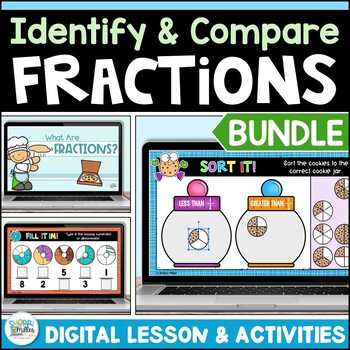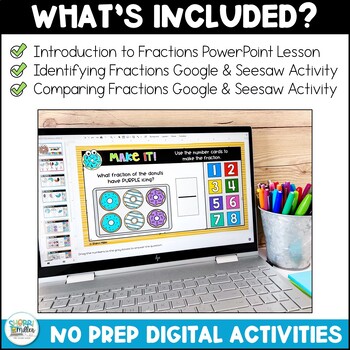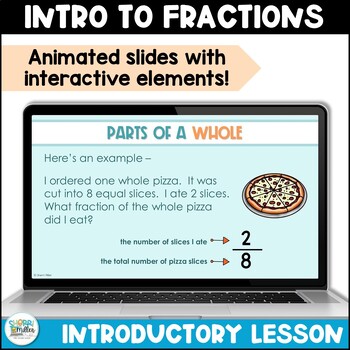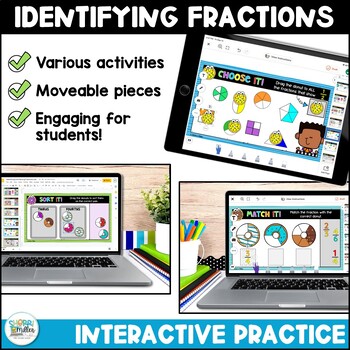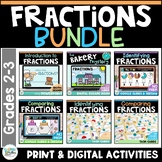Introduction, Identifying & Comparing Fractions Practice Activities Mini BUNDLE
- Zip
- Google Apps™

What educators are saying
Products in this Bundle (3)
Also included in
- Fractions can be a tough concept for students. This math BUNDLE of 6 resources for introducing, identifying, naming and comparing fractions uses models and interactive activities to make learning fractions fun and engaging! Your students will LOVE the variety of the print and digital practice activiPrice $17.95Original Price $22.45Save $4.50
Description
Introducing, identifying, naming and comparing fractions are fun and engaging with these digital NO PREP math activities! The Introduction to Fractions PowerPoint presentation is easy to use and introduces fraction vocabulary and the basic skills for beginning fractions. Your students will LOVE the variety of the interactive practice pages in both the Google Slides and Seesaw activities. These paperless activities are a great worksheet alternative!
➡️ Click the PREVIEW above to see more! ⬅️
The Bundle includes:
⭐️ Interactive Introduction to Fractions PowerPoint lesson with student follow-up worksheet
⭐️ Identifying and Naming Fractions activity in Google Slides and Seesaw formats
⭐️ Comparing Fractions activity in Google Slides and Seesaw formats
Math skills include:
✅ What is a fraction?
✅ Equal parts
✅ What a fraction looks like
✅ Numerator
✅ Denominator
✅ Fraction bar
✅ How to read a fraction
✅ How to write a fraction
✅ Fractions of a whole
✅ Fractions of a set
✅ Identifying fractions with models
✅ Comparing fractions with models
The NO PREP, paperless Google Slides and Seesaw versions are easy to use! Just assign in Google Classroom, Canvas, your LMS or share through Google Drive. Answer key is included!
❤️️ This resource is perfect for:
- Whole class or small groups
- Independent practice
- End of unit or end of year test prep
- Math centers
- Morning work
- Early finishers
- Sub plans
- Intervention
- Enrichment
- Quiet work while you individually assess students
Feedback!
Don’t forget to rate this product and provide feedback to earn TpT credits good toward the purchase of future products!
Let’s Connect!
FOLLOW ME on TpT to be notified when new resources are posted. New resources are always 50% off for the first 24 hours!
Thank you,
Sherri Miller

